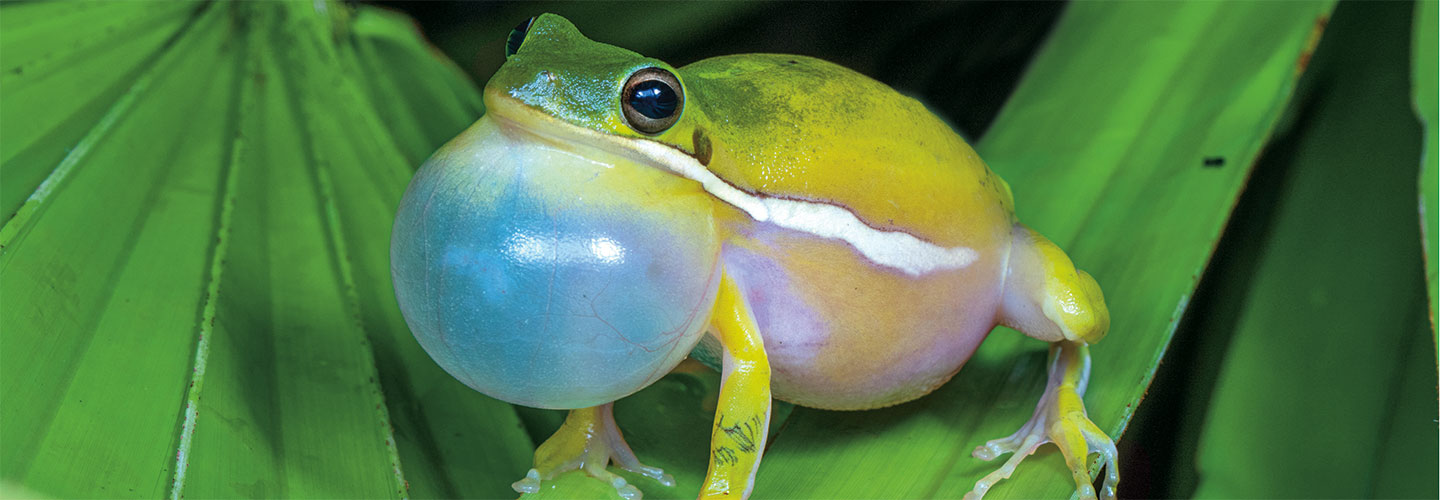On a spring evening in St. Louis, Missouri, Ann Earley grabs a flashlight and heads out the door. She walks down the street to a small, neighborhood pond. She stops, checks the time, and listens.
Earley isn’t just out for a stroll—she’s here on a mission. She’s a citizen scientist with FrogWatch USA, a project run by the Association of Zoos and Aquariums. Every year between February and August, volunteers around the U.S. listen for frog calls they hear in their area and report them to FrogWatch. This data helps scientists monitor frog populations all over the country.
Frogs around the world are in trouble. About one-third of all amphibians, including frogs, are at risk of becoming extinct. With the help of volunteers like Earley, scientists are trying to help. Here’s how they follow the steps of the scientific process to do it.

